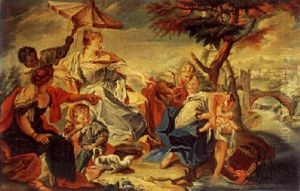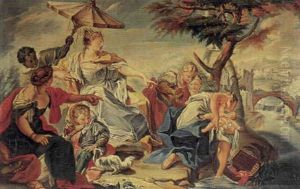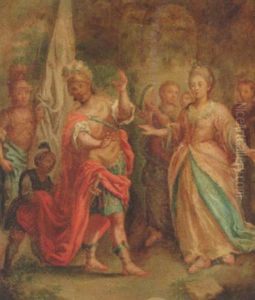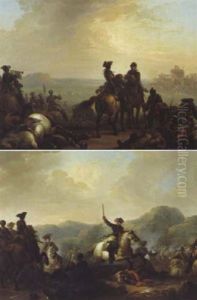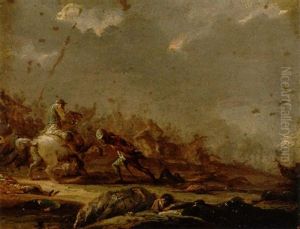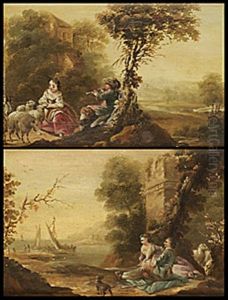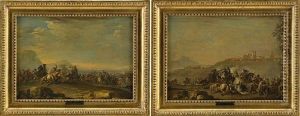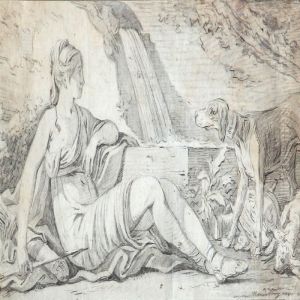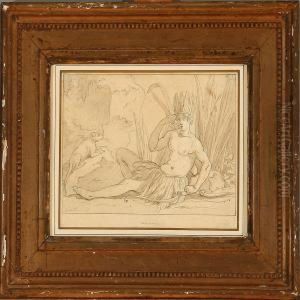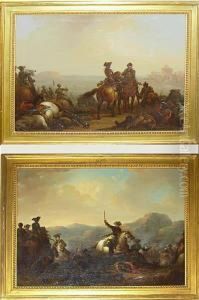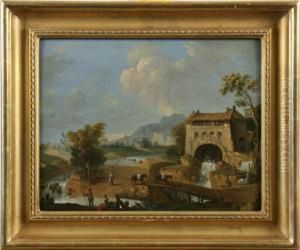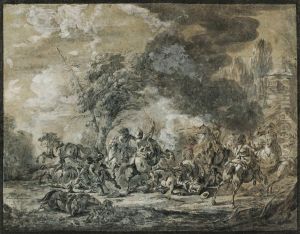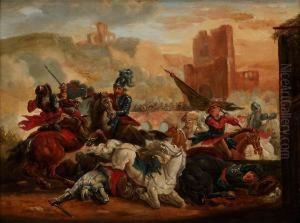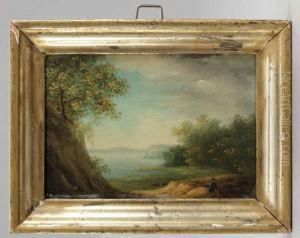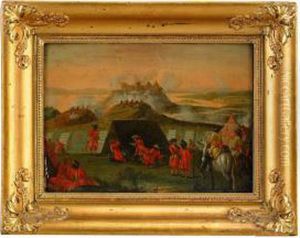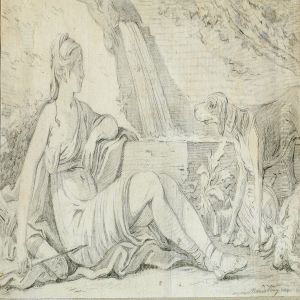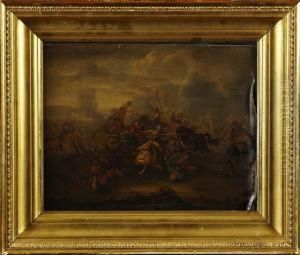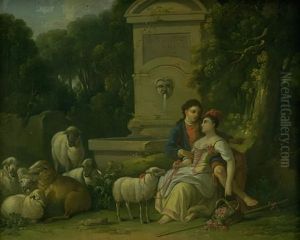Johan Edvard Mandelberg Paintings
Johan Edvard Mandelberg was an influential Swedish decorative painter who played a significant role in the artistic landscape of the 18th century. Born on November 24, 1737, in Lübeck, Germany, Mandelberg's family originally hailed from Sweden. Mandelberg's artistic journey began with his studies under the guidance of decorative painter Johan Pasch in Stockholm. He later continued his education in Paris, where the arts were flourishing under the reign of Louis XV.
In Paris, Mandelberg was deeply influenced by the Rococo style, which was characterized by ornate decoration, light colors, and asymmetrical designs. He studied at the Royal Swedish Academy of Arts and was greatly impacted by the works of François Boucher and other French Rococo artists. His time in France allowed him to hone his skills and develop a nuanced understanding of decorative motifs and techniques that would later define his career.
After returning to Sweden, Mandelberg became one of the most sought-after decorative painters, particularly known for his work on interiors of churches and palaces. He was adept at creating illusionistic ceiling paintings, ornamental frescoes, and wall decorations that reflected the opulent tastes of the time. His work displayed a masterful blend of vibrant colors, dynamic compositions, and intricate details.
One of Mandelberg's most notable commissions was the decoration of the Royal Palace in Stockholm. His contributions to the palace's interior design remain a testament to his artistic prowess and have been preserved as part of Sweden's cultural heritage. Throughout his career, Mandelberg's work continued to exude the elegance and exuberance of the Rococo style, albeit with a distinctive Swedish touch.
Despite his success, Johan Edvard Mandelberg's life was not without challenges. He faced financial difficulties and struggled with personal issues, which affected his mental health. Mandelberg's life came to a tragic end when he took his own life on May 24, 1786, in Stockholm. His legacy, however, endures through the stunning works he left behind, which continue to be admired for their beauty and historical significance. Mandelberg's contributions have cemented his place as an important figure in the history of Swedish art.

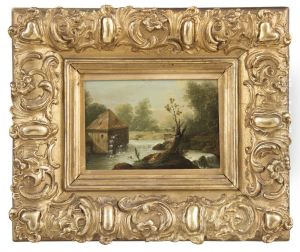
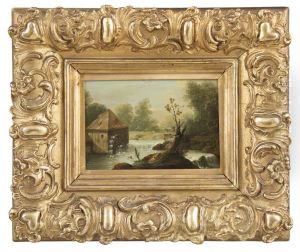
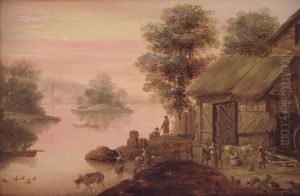
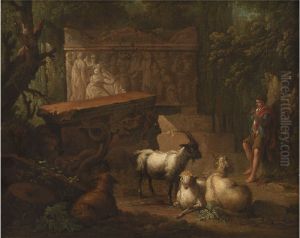

![La Fontaine D'amour [and] Pastorale [after Boucher]](https://www.niceartgallery.com/imgs/4059693/s/johan-edvard-mandelberg-la-fontaine-damour-and-pastorale-after-boucher-799c6fbd.jpg)


